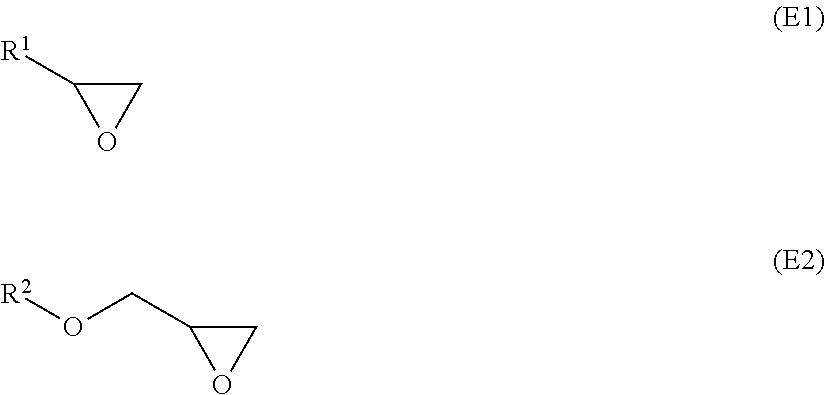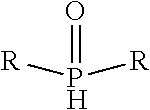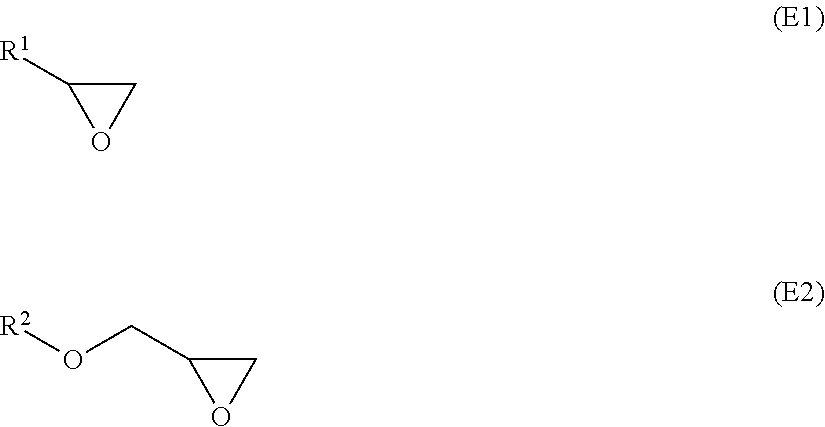Stabilized iodocarbon compositions
a technology of iodocarbon composition and composition, which is applied in the direction of heat-exchange elements, petroleum industry, chemistry apparatus and processes, etc., can solve the problems of inability to predict, unstable iodine compounds such as trifluoroiodomethane, and often significantly less stable, so as to achieve low combined ozone depletion and well stabilized
- Summary
- Abstract
- Description
- Claims
- Application Information
AI Technical Summary
Benefits of technology
Problems solved by technology
Method used
Image
Examples
examples
[0191]The application is further explained in light of the following examples, which are illustrative and not intended to be limiting in any manner.
example i
Example I-1
[0192]This example illustrates a stabilized composition of the present invention comprising CF3I, PAG oil, and isoprene.
[0193]A mixture (1.6 grams) of trifluoroiodomethane (25 wt. %) and HFO-1234yf (75 wt. %) is added to 3 grams of a composition containing 99% by weight of PAG oil and 1% by weight of isoprene. The resulting mixture is placed into a glass tube with metal coupons of aluminum, steel, and copper, and the tube is then sealed. The sealed glass tube is put into an oven at 300° F. for two weeks. After such time the tube is removed and observed.
[0194]Upon observation, the mixture is one phase, indicating that the refrigerant has during the period remained miscible and soluble in the PAG oil. In addition, the liquid in the tube is clear with a light yellow color. The steel coupon appears unchanged.
[0195]The glass tube is opened and the gas is extracted. The gas is examined by gas chromatography for the presence of trifluoromethane (HFC-23), which is a decomposition...
example i-2
[0196]This example illustrates a stabilized composition of the present invention comprising CF3I, PAG oil, and myrcene.
[0197]A mixture (1.6 grams) of trifluoroiodomethane (25 wt. %) and HFO-1234yf (75 wt. %) is added to 3 grams of a composition containing 99% by weight of PAG oil and 1% by weight of myrcene. The resulting mixture is placed into a glass tube with metal coupons of aluminum, steel, and copper, and the tube is then sealed. The sealed glass tube is put into an oven at 300° F. for two weeks. After such time the tube is removed and observed.
[0198]Upon observation, the mixture is one phase, indicating that the refrigerant has during the period remained miscible and soluble in the PAG oil. In addition, the liquid in the tube is clear with a light yellow color. The steel coupon appears unchanged.
[0199]The glass tube is opened and the gas is extracted. The gas is examined by gas chromatography for the presence of trifluoromethane (HFC-23), which is a decomposition product of t...
PUM
| Property | Measurement | Unit |
|---|---|---|
| GWP | aaaaa | aaaaa |
| GWP | aaaaa | aaaaa |
| GWP | aaaaa | aaaaa |
Abstract
Description
Claims
Application Information
 Login to View More
Login to View More - R&D
- Intellectual Property
- Life Sciences
- Materials
- Tech Scout
- Unparalleled Data Quality
- Higher Quality Content
- 60% Fewer Hallucinations
Browse by: Latest US Patents, China's latest patents, Technical Efficacy Thesaurus, Application Domain, Technology Topic, Popular Technical Reports.
© 2025 PatSnap. All rights reserved.Legal|Privacy policy|Modern Slavery Act Transparency Statement|Sitemap|About US| Contact US: help@patsnap.com



